One of the most iconic flowers you can plant in any garden is the daisy. With their yellow middles and white petals, these lovely flowers are just the spot of perennial sunshine you are looking for.
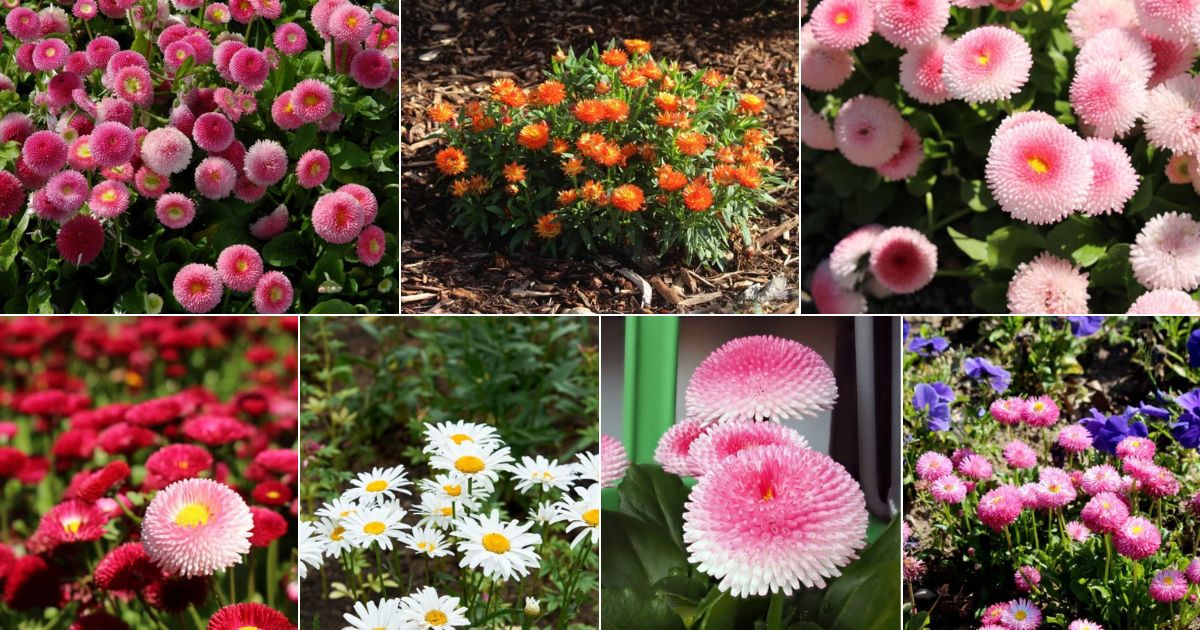
Jump to:
- What Are Daisies?
- Daisy Basics
- Where Do Daisies Grow?
- Why Grow Daisies?
- Daisy Landscaping Ideas
- Recommended Daisy Varieties
- When Do Daisies Bloom?
- How Long Do Daisies Bloom?
- When to Plant Daisies
- Ideal Growing Conditions for Daisies
- How to Plant Daisies
- How to Care for Daisies
- How to Transplant Daisies
- Recommended Companion Plants for Daisies
- Frequently Asked Questions About Growing Daisies
- Where to Buy Daisies
What Are Daisies?

“What is a daisy?” is a very basic question, but it does not have the simplest answer.
Some people using this name may be referencing any flower in the Asteraceae family. That family sometimes is called the “daisy family.”
But it is also called the “aster family” and the “sunflower family.” So, we can only say that all members of that family are daisies in the broadest sense.
You probably are not thinking of the entire Asteraceae family when you talk about daisies. You are probably referring to more specific plants.
One example is the common daisy, also known as the “English daisy” or “lawn daisy,” a flower with a yellow middle and white petals.
This plant also goes by many other names. A few of these include “dog daisy,” “goose flower,” “Marguerite,” “bone flower,” “bonewort,” and “bruisewort.”
The common daisy is a member of the Asteraceae family, but it falls under the Bellis genus—thus its scientific name, Bellis perennis.
Contrast that with members of the Aster genus, the plants we usually call “true asters.”
Another example of a plant you may be picturing when you think about “daisies” is the popular Gerbera daisy.
This one also belongs to the Asteraceae family. But it is classified under the Gerbera genus.
Just to make matters more confusing, sometimes a “true aster” might be called a “daisy.”
Aster amellus is a true aster as part of the Aster genus, but its common name is the “European Michaelmas daisy.”
We covered perennials in the Aster genus pretty thoroughly in our Asters Full Growing Guide. In this guide, we will be focusing on English daisies.
Daisy Basics
| Zones: | 4-8 |
| Blooming season: | Spring and Summer |
| Expected height: | 4-8 inches |
| Soil: | Rich soil |
| Sun: | Partial to full sun |
Where Do Daisies Grow?
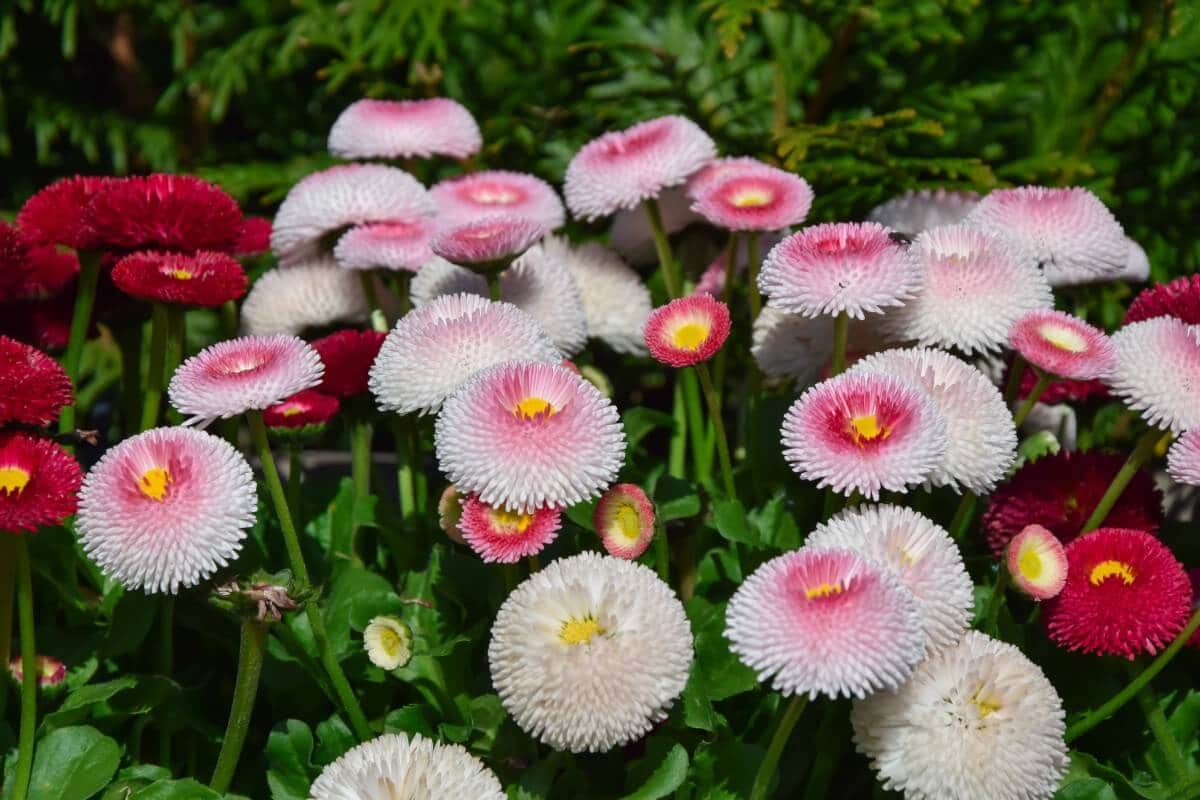
As you would expect, the European daisy is native to Europe. Specifically, you will find it mostly in the northern, western, and central parts of the continent.
But by now, English daisies are being grown all over Europe as well as on other continents. They are popular in the Americas and in Australia.
If you are in USDA zones 4-8, you should be able to grow daisies pretty easily.
Why Grow Daisies?
There are many great reasons to think about planting daisies in your garden! Here are a few:
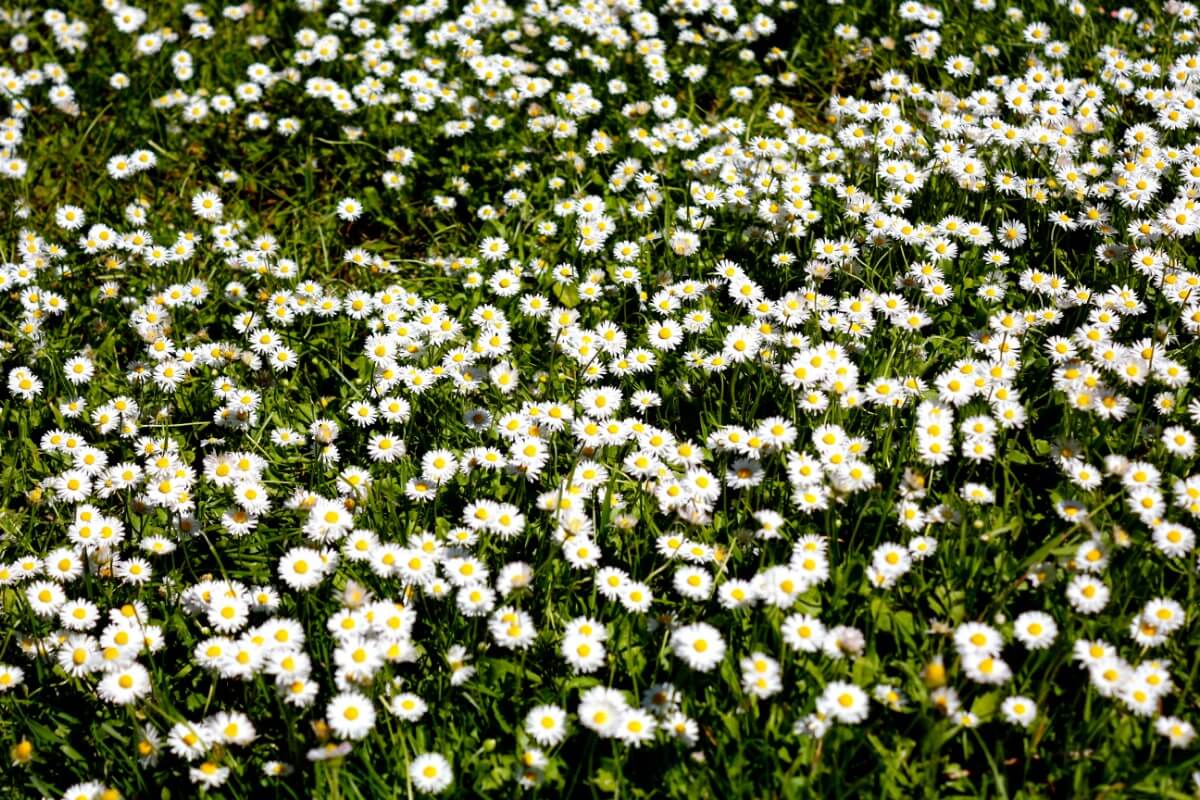
- The common daisy is one of the most iconic plants in existence. If someone were to ask you to think of a flower at random, there is a really good chance you would picture a daisy (ask a child to draw a flower, and they will almost certainly portray one). Such an iconic plant makes a lovely addition to any garden.
- The English daisy can bring cheerful vibes to your garden. Few sights are cheerier than the sunny face of a daisy with its yellow center. They can brighten up any lawn.
- Daisies are delightfully low-maintenance. They make a great choice for gardeners of all skill levels. They also may be ideal for you if you don’t have a lot of time to dedicate to your garden.
- Your daisies may very well be disease-free. Daisies can get diseases, like any other plants, but they are not too prone to them. There is a good chance you won’t need to contend with any.
- Pests are not usually a major issue with daisies. Just as daisies are often free of disease, they usually do not attract too many pests.
- Daisies can grow in compacted soils where other plants do not thrive. This makes them perfect for filling in some blank spots in your garden where you have not been able to get anything else to grow.
- You can decrease soil erosion with daisies. Did you know that when daisies establish their roots, they help to keep your soil intact? So, if you have been having difficulties with erosion, consider planting them to reduce these woes.
- Pollinators like daisies. You don’t want pests in your garden, but you do want friendly pollinators! They are big fans of daisies, so you may notice more of them flitting about once you add daisies to your yard.
- Daisies are considered deer-resistant plants.
- Daisies are literary plants. They appeal to the imagination, speaking to the romantic in each of us.
What do we mean when we say that daisies are “literary” plants?
The University of Oxford writes, “The common daisy has been a recurrent feature of English literature since at least the fourteenth century; Geoffrey Chaucer described the common daisy as 'the emperice, and floure of floures alle'. In Scotland, Robert Burns reflected on the daisy's fate under a plough shear and the brevity of our lives: 'Full on thy bloom, Till crush'd beneath the furrow's weight'. Daisy-chain construction opened one of the most well-known stories in children's literature, Lewis Carroll's Alice's Adventures in Wonderland (1865). Repetition and symmetry make daisy-chain analogies commonplace in fields as diverse as computing, crocheting, transplant surgery and angling.”
Daisy Landscaping Ideas
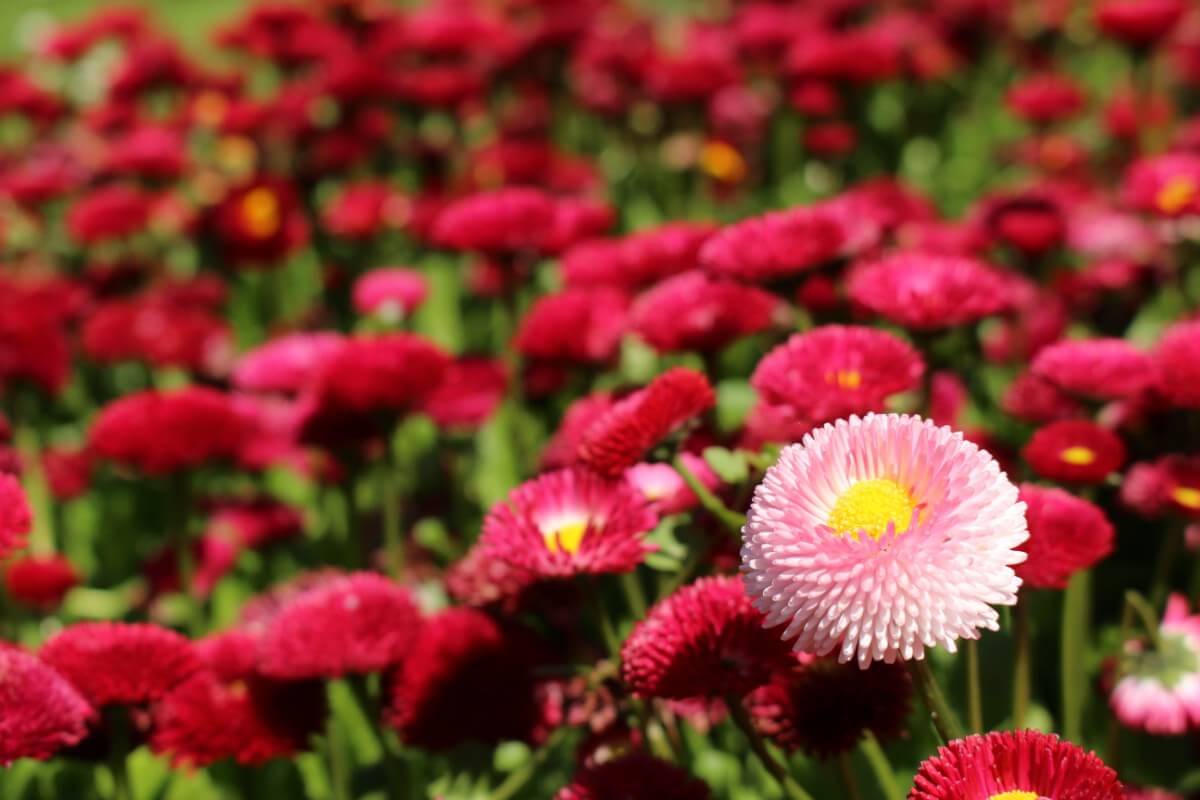
Here are a few ways to think about using daisies in your garden:
- The daisy is almost expected in English cottage gardens. For that reason, if you are trying to create that effect, you may very well want to think about incorporating them. They will help you achieve the look you are dreaming of.
- You can plant daisies as stunning ground cover. After all, there are situations where the ability of daisies to spread rapidly across a large area may be beneficial to you. Maybe you have a patch in your garden that is completely bare. Or perhaps you just want a lawn full of daisies—some people enjoy this effect.
- Daisies can keep weeds away. While daisies are considered a “weed” by some people, others see them as a useful deterrent to weeds. Where daisies establish themselves, it is more difficult for other plants to get a foothold. So if there are less desirable weeds in your area, planting daisies could be just the thing to keep them from taking over your garden.
- You can create a more unified appearance between the yard and garden using daisies. You might like the idea of a stark transition between your garden beds and your lawn—but you also might not. If you do not, and would like your grounds to look more seamless, you can use daisies to create a smooth transition.
- Fill out empty spots. Anywhere there are empty spots in your garden, especially where the soil is compacted, daisies make it easy to fill them out with color and life.
Remember, daisies spread like crazy. So make sure you have room for them, and that they will not take over your lawn!
Recommended Daisy Varieties
When picturing the common daisy, you probably picture the classic white flowers. But there are actually some surprising varieties of Bellis perennis. Here are some examples of cultivars of this species:
- Habanera White: This type of daisy does sport yellow centers and white petals. But the petals are extremely thin and numerous.
- Speedstar Plus Carmine: Yellow centers and petals even thinner and more numerous than those of the Haberna White are two characteristics of this cultivar. But the most surprising is its reddish color, which gives it its name.
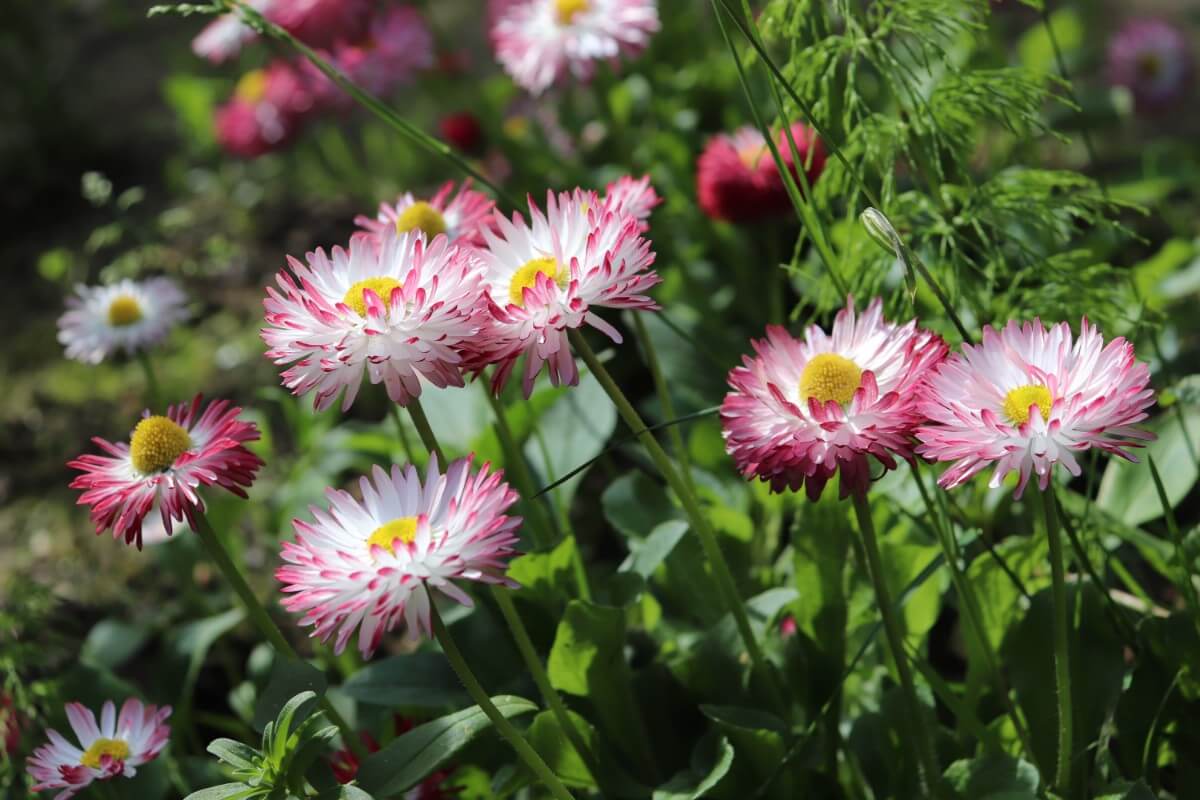
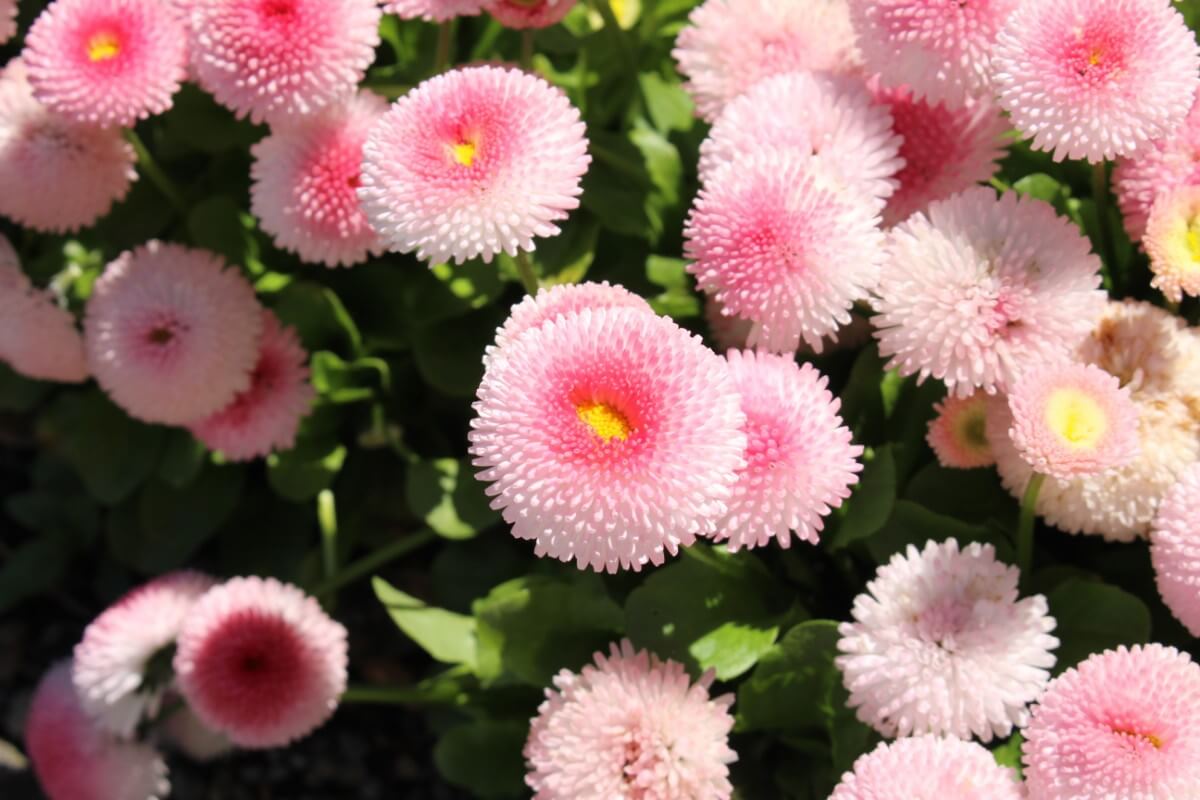
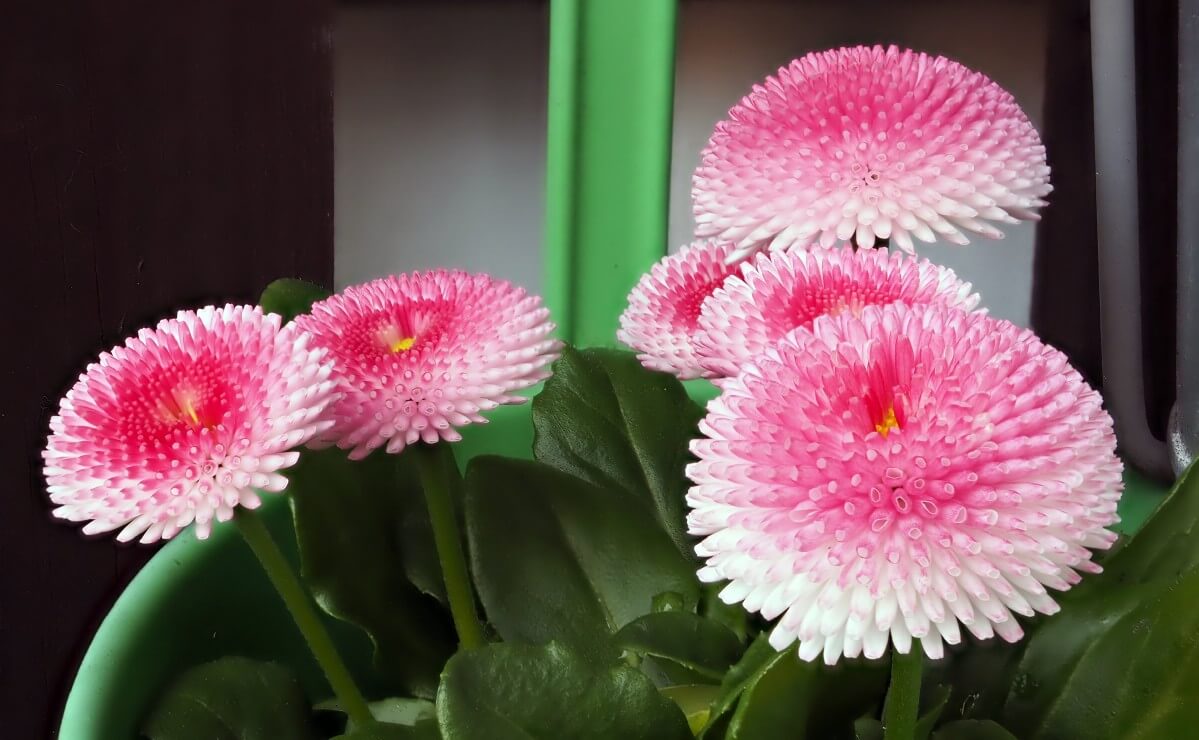
Remarking on the new cultivars of English daisies available, Texas A&M University writes, “Times have changed, and so have English daisies. The modern varieties are not your great-great-great-great-grandfather's daisies! They've grown far larger and more double than the small starlike flowers sprinkled over English lawns from castles to cottages. Several named varieties have been selected with much larger flowerheads up to 2 inches in diameter in colors ranging from white through pink, rose and almost red, on 3 to 5 inch stems. In some cases they have become so double the bright yellow center is almost hidden.”
When Do Daisies Bloom?
Typically, the bloom period for daisies is in the springtime and early summer. There may sometimes be flowers after that, but once you get your first frost, your daisies will definitely be done for the year.
If your climate is hot, the daisies are less likely to bloom later in the season.
How Long Do Daisies Bloom?
Common daisies can bloom as early as May, and as late as July. So, you can enjoy a lengthy bloom., especially if you plant more than one cultivar.
When to Plant Daisies
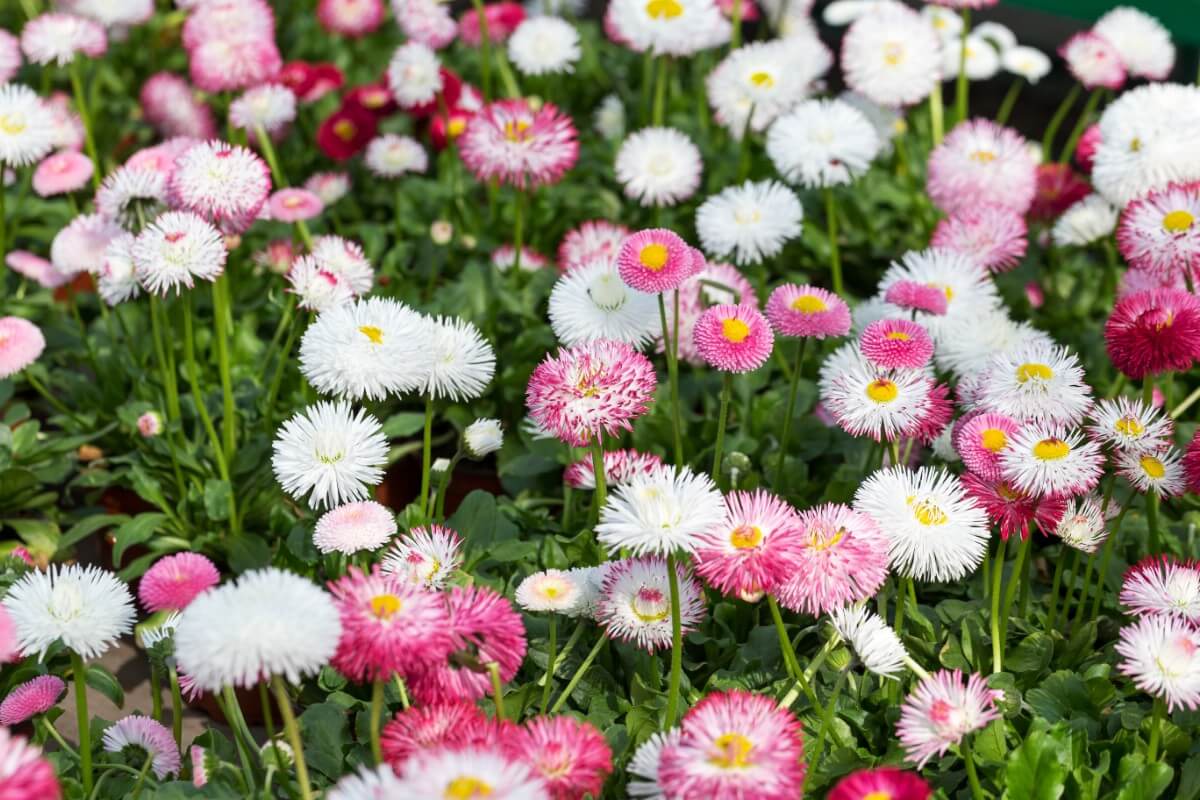
The right time to plant daisies depends on where you live. Missouri Botanical Garden explains, “It is usually grown from seed. In the South (including St. Louis), seed is planted in fall or indoors in winter for bloom the following spring. By the heat of the summer, plants decline to the point where removal becomes appropriate. In the North, seed is planted in early spring for bloom in summer. In cool summer conditions (USDA Zones 4-5 and the West Coast), plants may spread aggressively by spreading crowns and self-seeding.”
Ideal Growing Conditions for Daisies
We have talked about when to plant daisies when they bloom, and how long they blossom. But what are their ideal growing conditions? Let’s discuss sun, water, and soil requirements.
How Much Sun Do Daisies Need?
If you are trying to grow daisies, plant them in a spot that receives sunlight, but is in shade during the afternoon. That is where they will do best. In some cases, they might also be okay with full sunlight, at least if it is not too hot and dry a location.
What Type of Soil is Right for Daisies?
Daisies like rich, well-draining soil. It is good for the soil to be moist, but you do not want it to be soggy.
How Much Water Do Daisies Need?
Daisies like regular watering, especially during the hot, dry months of the year. Indeed, they do not handle drought conditions well. So, do not permit their soil to dry out.
How to Plant Daisies
Now that you know what growing conditions are ideal for common daisies, we can talk about how to plant them.
How to Start Common Daisies from Seed
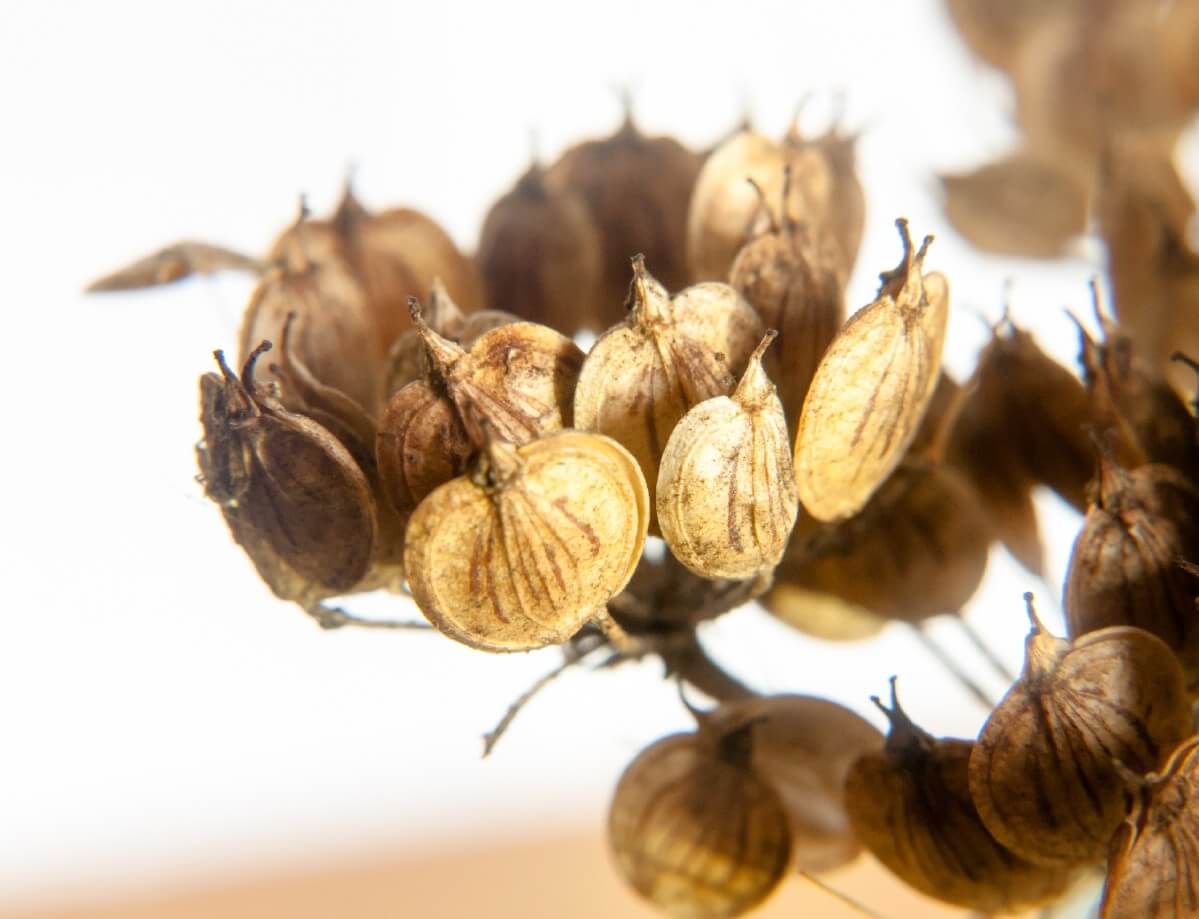
Here are the steps to starting daisies from seeds indoors. You should begin 8-10 weeks before you intend to move the plants outdoors.
1. Start with seed trays. Put the seeds in your tray. Do not put too much soil on top of them—just a little bit. If they do not receive enough light, they will not germinate.
2. Place the tray where the seeds will get plenty of light. The ideal temperature is 70 degrees Fahrenheit.
3. Wait for the seeds to germinate.
It will probably take around 10 to 25 days for your daisy seeds to sprout. During that time, keep the soil moist.
4. Wait three or four weeks after the seedlings sprout before you consider moving them outside.
5. Harden the daisies.
You cannot move the daisies outside abruptly and leave them there. They need to adapt first to outdoor weather. So, move them in and outside until they are hardened.
6. Plant the seedlings in their permanent location.
Now you can proceed to container or ground planting.
Note: You do not always need to start daisy seeds indoors. They often start easily outdoors, and indeed, tend to start themselves whether you want them to or not.
Container Planting
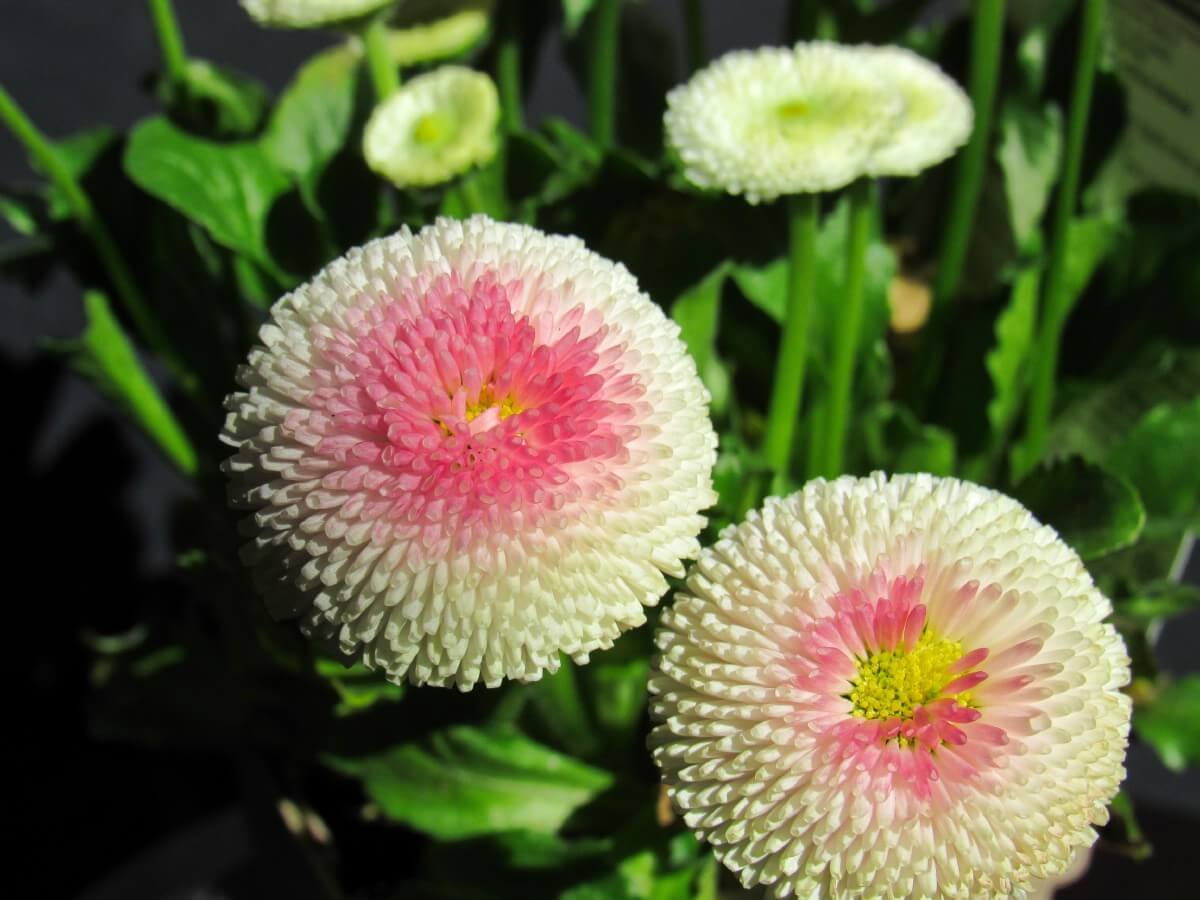
English daisies can work well for container gardening. In fact, they can be particularly well suited to it.
If you are concerned about daisies spreading across your lawn, for example, it might make more sense to plant them in pots and then keep those pots on your patio with some distance between them and the grass. The seeds can still get to your grass, but not as directly as if they were growing directly in your garden beds.
1. Find the right spot for your container.
The first thing to do is figure out where you want to place the container for your daisies. Partial sunlight is ideal if you are in a hot climate, while full sun may be suitable for a cool climate.
A patio that is on the east side of a home may be perfect, because that way, the shade will fall on the daisies during the afternoon.
2. Get your container ready.
Daisies need well-draining soil, so put drainage holes in your container if it does not have them. Then add your soil.
3. Plant your starter plants or seeds.
Next, dig a hole for your starter plant and put it in the container, or plant your seeds.
Backfill the soil around your starter plant, or very lightly cover the seeds in soil.
3. Water your new potted daisies.
Spray the top of the soil with water if you planted seeds, so that they do not wash away. If you planted a starter plant, you can water it deeply.
Continue to make sure that the soil stays moist for your seeds as they germinate, or for your starter plants as they establish.
Ground Planting
To grow daisies in your lawn or garden, you need to either transplant starter plants or plant seeds directly in the soil.
1. Choose a suitable location.
Start by finding a place where your daisies will be happy. If you have a hot climate, that means partial shade. If you have a cooler climate, full sun may be more appropriate. In either case, look for rich, moist, well-draining soil.
2. Plant your starter plants or seeds.
Now, transfer your starter plants or seeds to the soil. If you are starting with seeds, do not put more than the thinnest layer of soil on top of them.
3. Water your daisies.
If your new daisies are starter plants, water them deeply to help them establish themselves. If you started from seeds, lightly misting the soil may be wiser. Too much water could push the seeds down too deep into the soil, and they may fail to germinate.
How to Care for Daisies
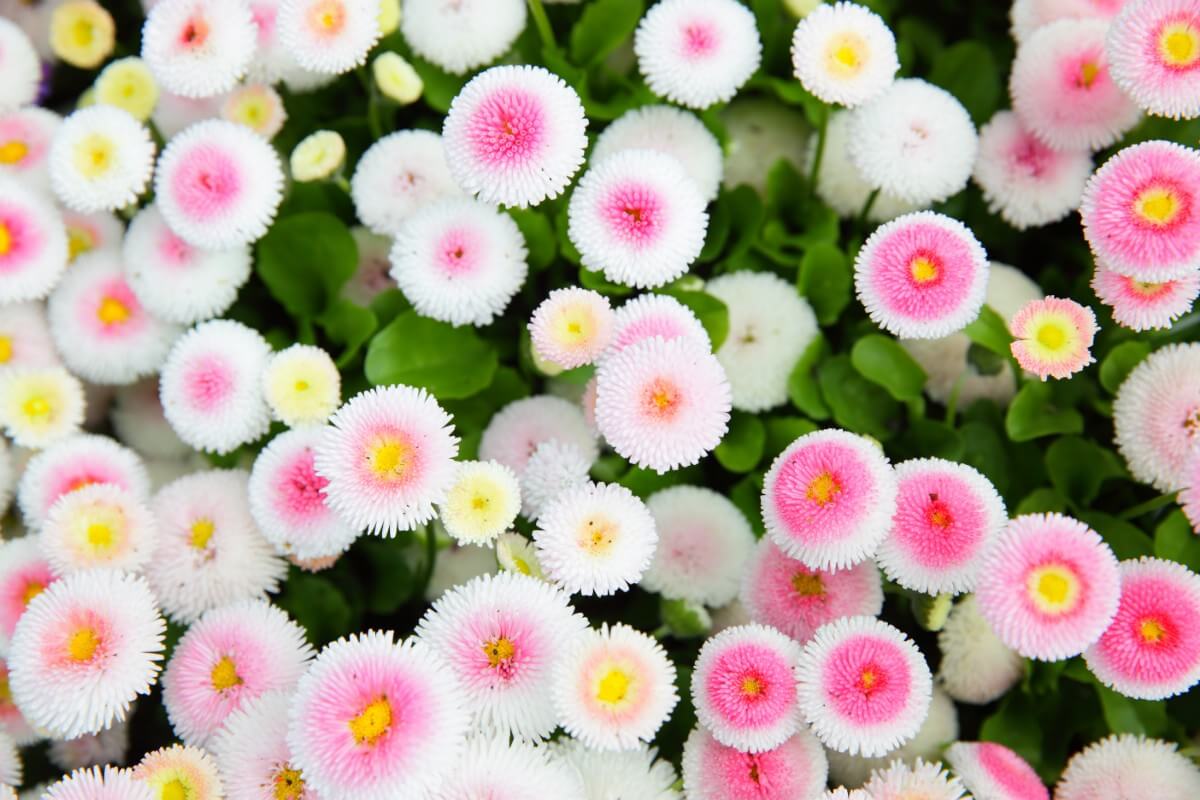
After planting your common daisies, how do you take proper care of them? Below are some recommendations. As you will discover, caring for these types of daisies is quite easy.
How to Fertilize Daisies
Daisies can benefit from fertilizer. If your plants are still pretty young, a fertilizer that contains significant phosphorus may be suitable. If you decide to use this, you should do so when you are planting if possible.
An all-purpose slow-release flower fertilizer is a good choice for established daisies. But you can also go with a quick-release fertilizer that is water-soluble. Fish emulsion may work out if you want to go the organic route.
How to Mulch Daisies

There are multiple uses for mulch with respect to your daisies.
If your winters are very cold, you may want to try applying mulch to protect your daisies. They are more likely to survive the winter if you do this.
Another useful application of mulch for English daisies is to lock moisture into the soil.
The third reason to mulch is to try and prevent daisies from spreading. MasterClass writes, “English daisies propagate easily through seeding, and you may find yourself with more English daisies than you want. To get rid of them, completely remove the roots from the soil, and cover the ground with mulch to prevent the daisy seeds from germinating and sprouting again. You can also grow English daisies in containers to control unwanted propagation.”
How to Stake Daisies
It should not be necessary to stake English daisies. They tend to reach a maximum height of anywhere from 4 to 8 inches, which is not very tall. So, you probably are not going to have to worry about these plants are drooping.
How to Prune Daisies
What do you need to know about pruning daisies? Let’s talk about what you need to know about deadheading them and cutting them back.
How to Deadhead Daisies
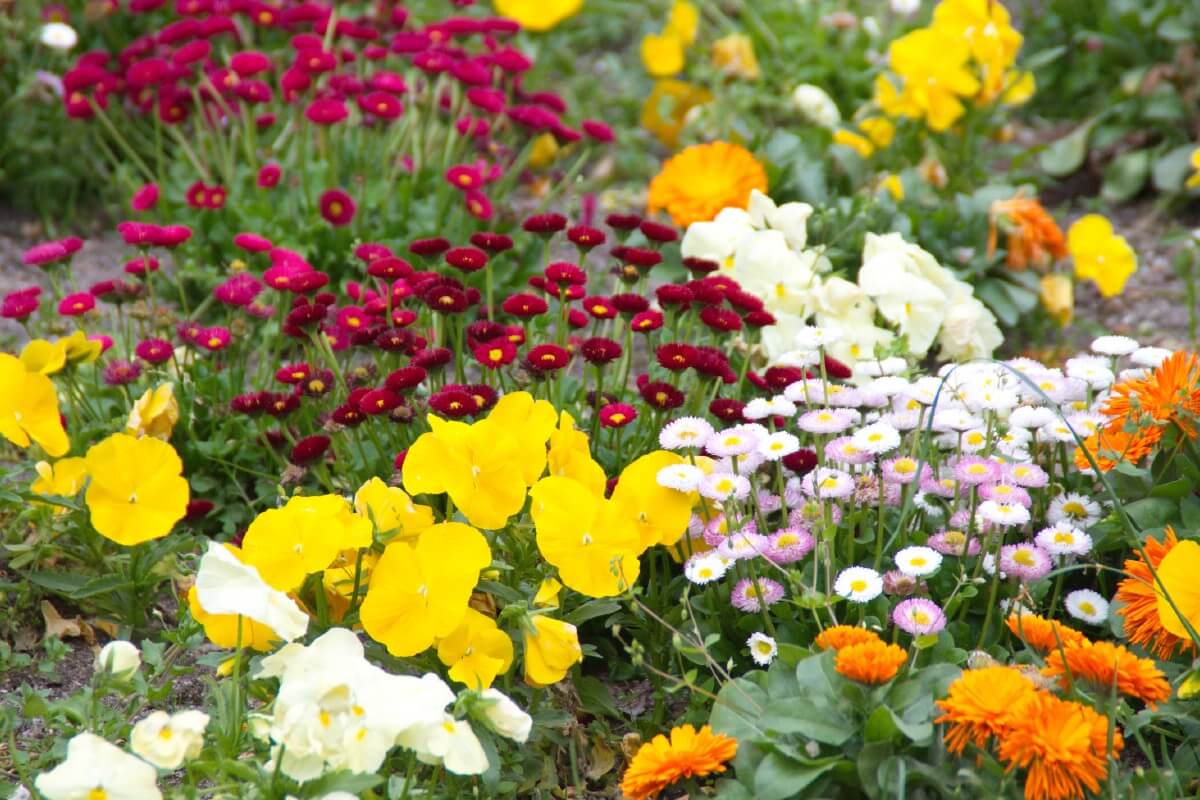
Deadheading is the process by which you manually remove spent blooms from flowering plants.
There are several reasons why deadheading your daisies is beneficial. The first is that they may bloom for longer if you get rid of the spent blossoms.
Another reason for deadheading the daisies is to stop them from going to seed. This is a good way to keep them in check if you do not want them to spread.
Last but not least, if you purchased bi-color double flowers or another form of double daisy, be aware that if it seeds itself, the resulting flowers are not going to be the same. While they will be beautiful flowers, each will be a single flower, not a double flower.
If you do not want those single flowers in your garden, then you should deadhead.
When to Cut Back Daisies
You do not really need to cut your daisies back after the season is over. That is one of the reasons they are such a low-maintenance plant.
But if you decide to do it to give your garden a cleaner appearance, you can trim the stems 3-4 inches above the ground.
You can put down mulch at the same time.
Are Daisies Vulnerable to Diseases or Pests?
What pests and diseases can plague perennial daisies? Thankfully, not a whole lot. It is common for daisies to grow happily in your flower bed without serious problems.
Sometimes, aphids can take a liking to English daisies. A bit of horticultural oil often is enough to get rid of them.
Then there is the European pepper moth, which likes to devour the leaves. You will probably spot the bite marks at the edges first. If you spot this type of damage, you are going to need to take swift action to get rid of the infestation. Nematodes are one possible solution.
What about diseases? One thing to be on the lookout for is cottony soft rot, also known as Sclerotinia sclerotiorum.
This disease attacks daisy stems. The patches of rot that form on them will have a cottony growth.
Conditions that are too wet tend to be at fault when cottony soft rot forms. Remember, moisture is good for English daisy plants, but they do not want to be drowning in it.
So, keep them out of soggy ground, and do not forget to put sufficient space between these classic perennials.
With sufficient drainage and air circulation, they should do fine.
How to Transplant Daisies
If you need to divide and transplant these showy flowers, the best season to do it is early during springtime.
Take care with root division, removing dead roots as needed while preserving healthy roots to the best of your ability.
Recommended Companion Plants for Daisies
What are some good companion planting options for English daisies?
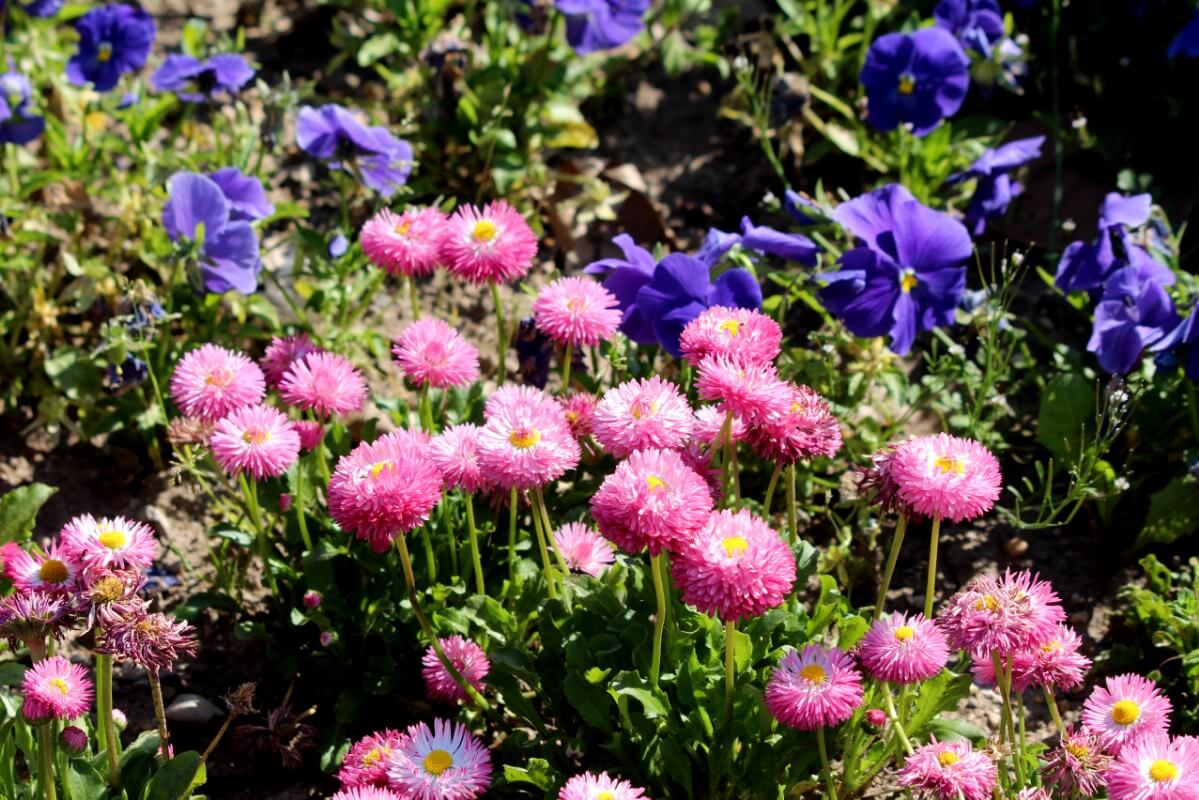
- Dianthus: If you are going for the cottage garden look, daisies accompanied by dianthus can be a perfect choice. Known simply as “pinks,” dianthus blossoms actually come in a wide range of hues, and look lovely next to daisies.
- Tulips: Like daisies, tulips are spring blossoms. These flowers have a very different look from daisies, however, and thus provide for some nice contrast when planted among them.
- Pansies: The purple blossoms of pansies can look lovely with English daisies.

- Crocus: These colorful flowers bloom in spring and grow in partial shade to full sun, just like daisies. Also like daisies, they tend to spread into carpets.
- Daffodil: The cheerful yellow faces of daffodil flowers can look beautiful next to daisies. They bloom in spring and like partial shade to full sun.
- Glory of the snow: This plant forms clumps of blue flowers that can contrast nicely with daisies in the spring.
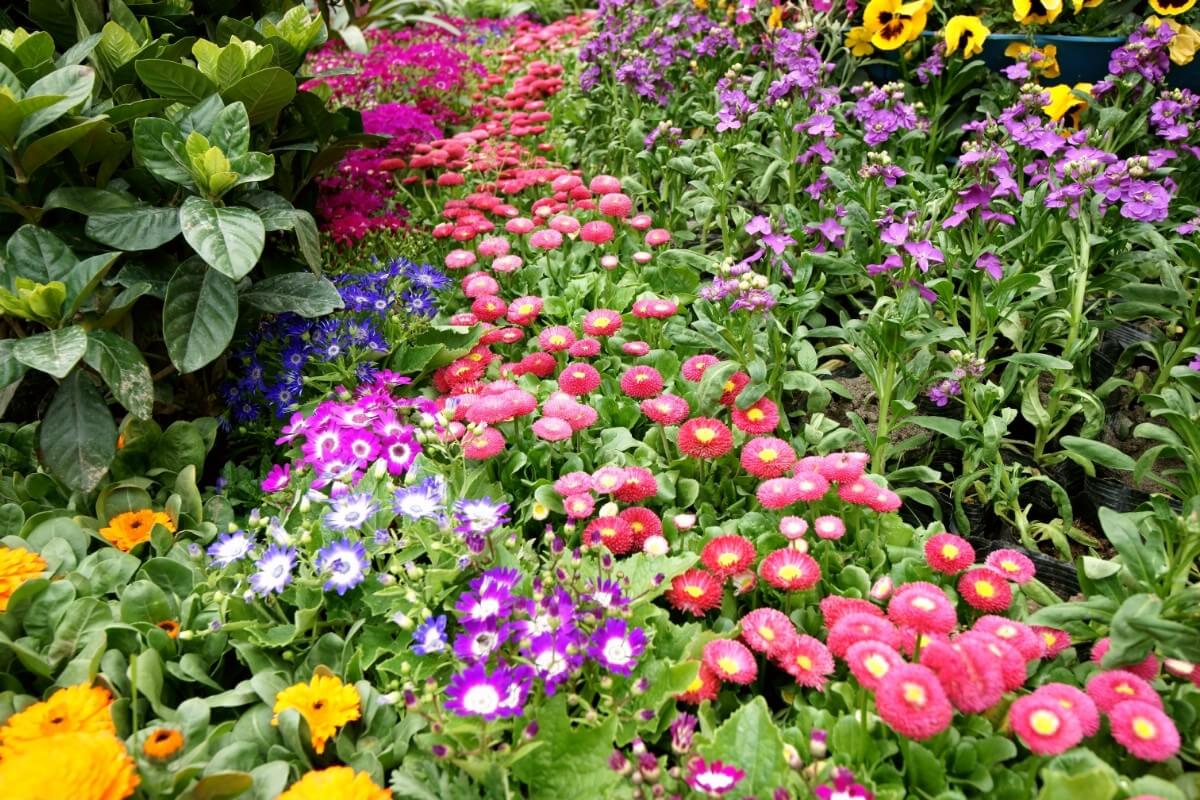
Those are just a few ideas! There are many other spring flowers that you can consider!
Frequently Asked Questions About Growing Daisies
Let’s answer a few questions gardeners commonly ask about daisies.
Q: Are daisies weeds?
A; That depends on who you ask and whether the daisies are well-controlled or not.
PennState Extension writes, “Although admired for its many positive attributes, Bellis perennis, has a mixed reputation. Depending on personal experience, it can be an attractive low-spreading ornamental flower enhancing borders, rock gardens or containers. By contrast, it may be a common, persistent weed of lawns, fields and abandoned areas. The daisy has naturalized in parts of the northern United States and its introduction to non-native environments has made it an aggressive species, which can be difficult to control or eliminate.”
Basically, daisies are super efficient at self-seeding, especially in windy areas, where they can spread quite far.
You will need to decide if they are an appropriate fit for your garden.
Q: Help! My daisies spread all over my lawn. How do I get rid of them?
A; If you have daisies where you do not want them, there is actually a tool you can buy just for that purpose. It is called a daisy grubber.
The tool is shaped like a fork. You can use it to pry out daisies, roots and all.
Why not just use your hands? You will probably miss some of the roots if you try to do this. The daisies will then re-grow, and you will have wasted your time and effort.
Q: What eats daisies?
A: As English daisies are considered to be deer resistant perennials, if something is eating yours, it is probably an insect like aphids or European pepper moths.
Q: Can you eat daisies?
A; Interestingly enough, you can eat the leaves. Missouri Botanical Garden says, “Young leaves may be eaten raw in salads or cooked.”
Q: Are daisies and asters the same?
A: One matter it is easy to get confused about is whether daisies and asters are the same thing or two different types of flowers.
They look a lot alike, and you sometimes will hear the same flowers referred to interchangeably by these two names.
Indeed, daisies and asters both belong to the same family, Asteraceae. Sometimes this family is even called the “daisy family” or the “aster family.” Incidentally, it is also the “sunflower family,” and contains sunflowers as well.
Under the Asteraceae family, there is a genus called Aster, in which we find aster flowers.
But even some Aster genus flowers might be referred to as daisies at times, like Aster amellus, the “European Michaelmas daisy.”
But there is another genus under the Asteraceae family called Bellis.
It is within this genus that you will find the common daisy, Bellis perennis.
So, are asters and daisies the same? It depends really on whether you are using the names “aster” and “daisy” to reference the family, genus or species.
If you are talking about the family, sure they are all part of Asteraceae.
But at the genus level, when we talk about “asters,” we usually mean plants in the Aster genus.
While “daisy” may reference various plants within Asteraceae, most people are thinking about the common daisy, Bellis perennis.
Q: What other types of daisies are there?
A; Other popular types of daisy flowers include Shasta daisies and Gerbera daisies.
Shasta daisy is the common name for the plant with the scientific name Leucanthemum × superbum.
It looks a lot like the English daisy, once again featuring a yellow center and white petals around it. As with English daisies, some people love these flowers and cultivate them purposefully, while others view them as weeds.
The Gerbera daisy actually is an entire genus within the family Asteraceae. Sometimes, plants in this genus also are called “African daisies.”
These flowers share the classic disc shape with the original form of English daisies, but their middles can be yellow or brown, and their petals can be white, yellow, orange, red, or other hues.
Q: What is best to plant with daisies?
A: Dianthus, pansies and daffodils are a few ideas. See our section on companion plants for more.
Q: Are daisies annual or perennial?
A: There are some annual varieties of daisies. But most daisies are perennial flowers, which means they come back year after year.
Indeed, in this article, we are focusing on the common daisy, Bellis perennis. Did you know that this scientific name translates from Latin to roughly “Everlasting beauty?”
As for the word “daisy,” that actually is derived from the phrase “day’s eye.” Daisies open in the morning, then shut their petals at night.
Where to Buy Daisies
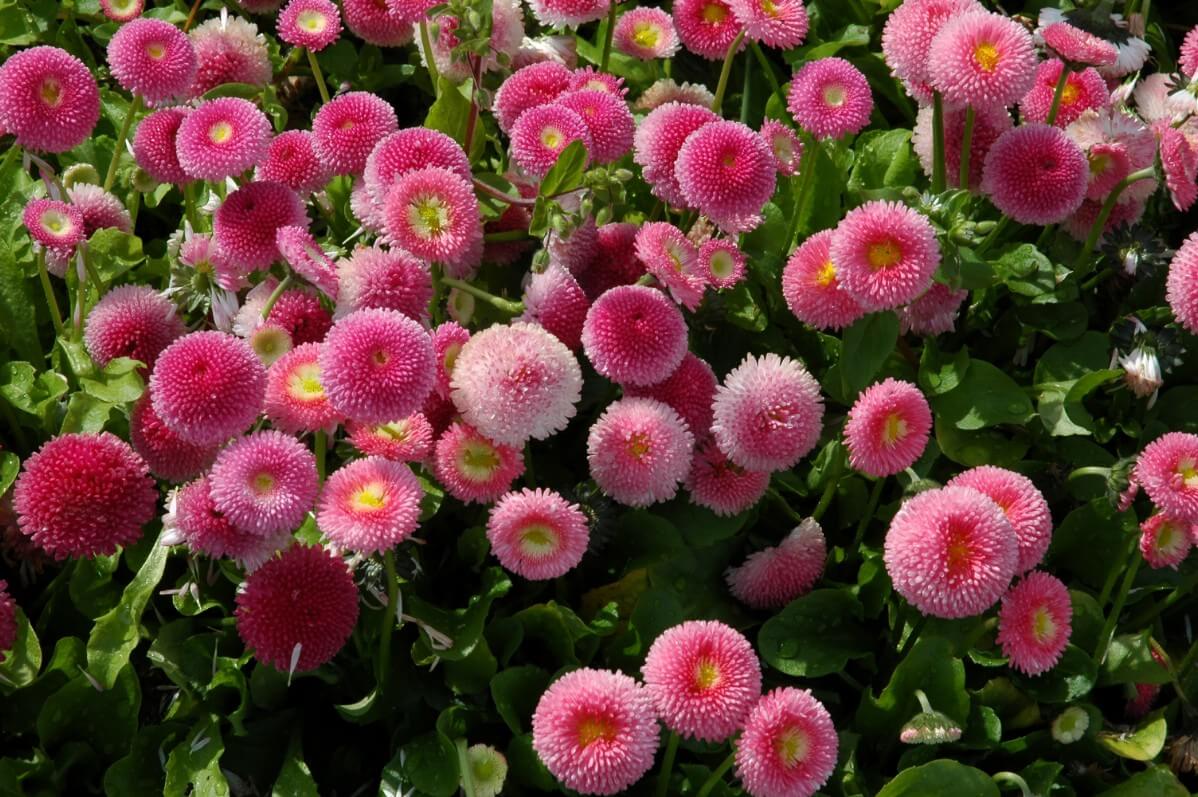
Now you know how to plant and take care of daisies! Are you ready to bring the cheerful beauty of daisies to your garden? Click the link below to shop daisies online now.

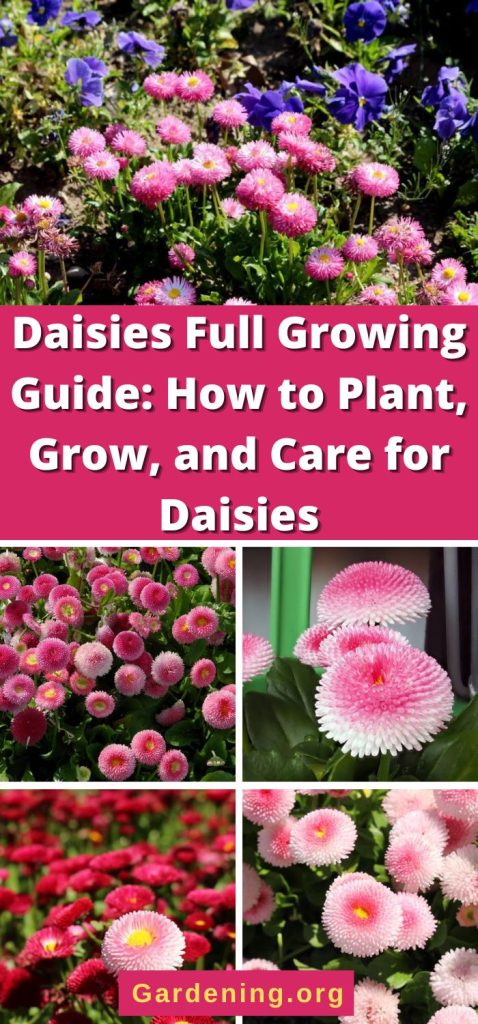
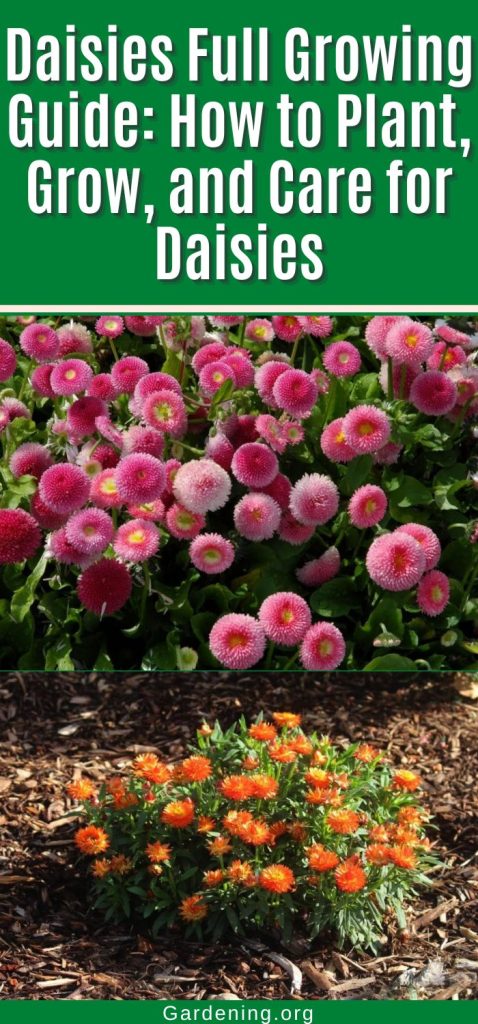
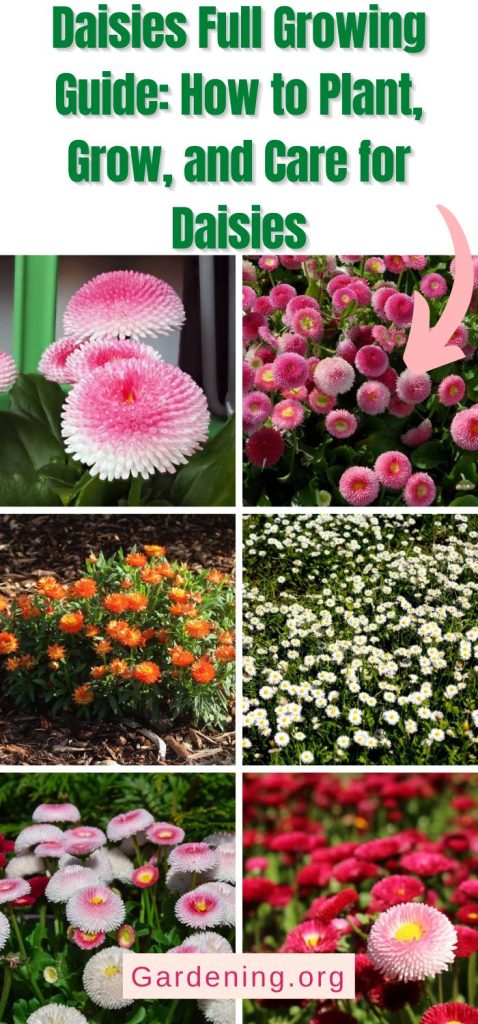
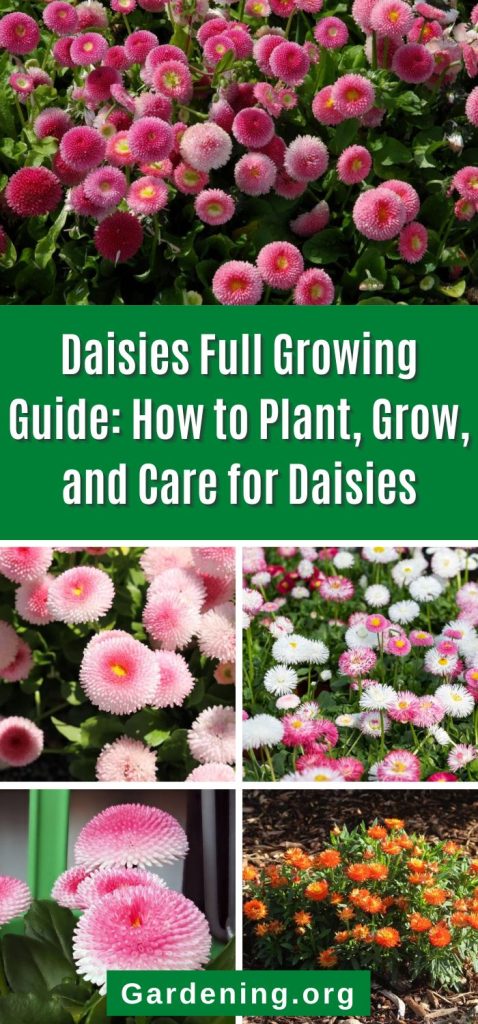
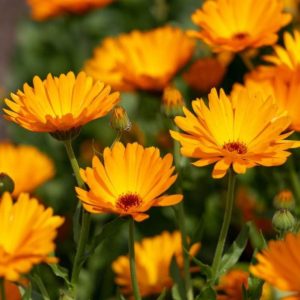
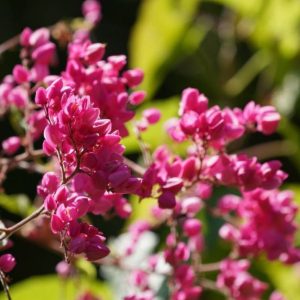
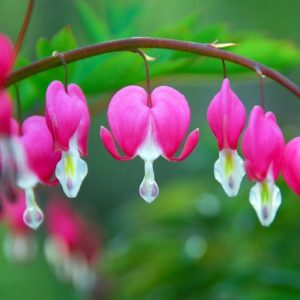
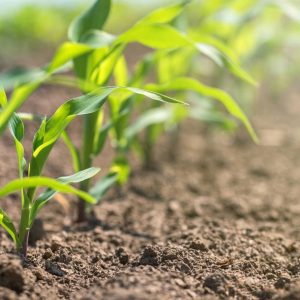
Leave a Reply